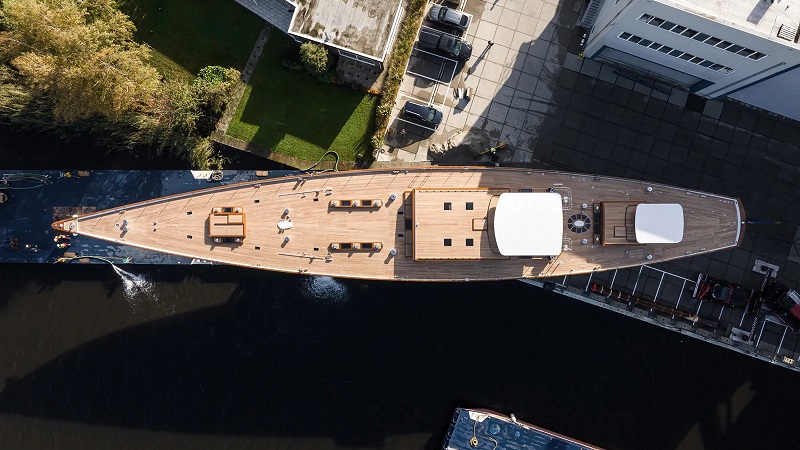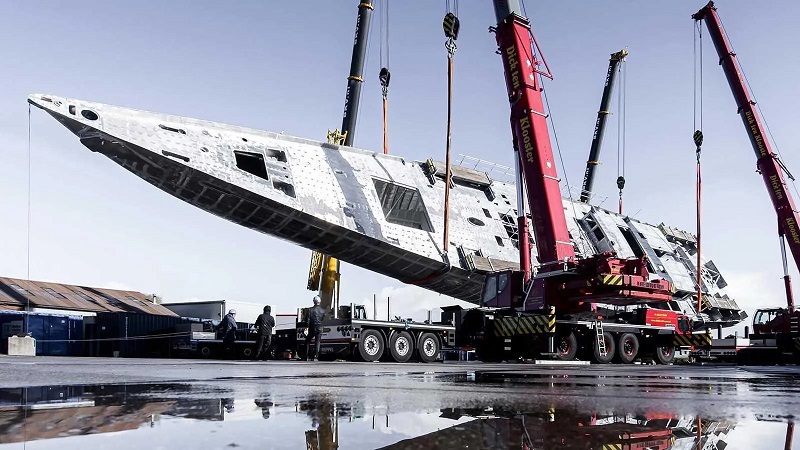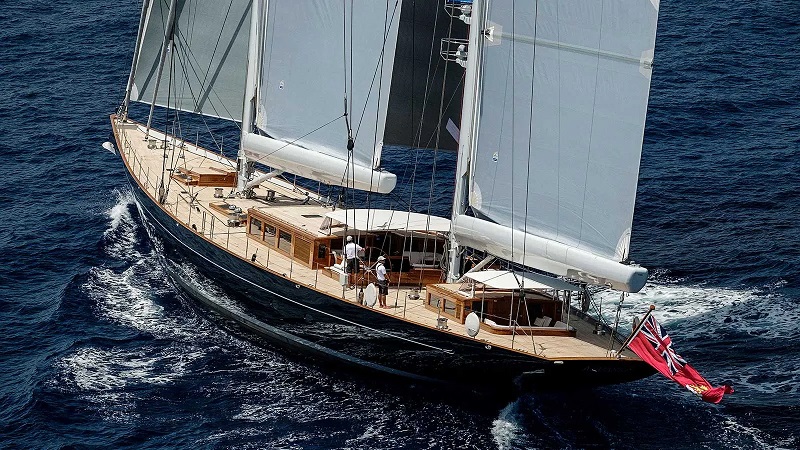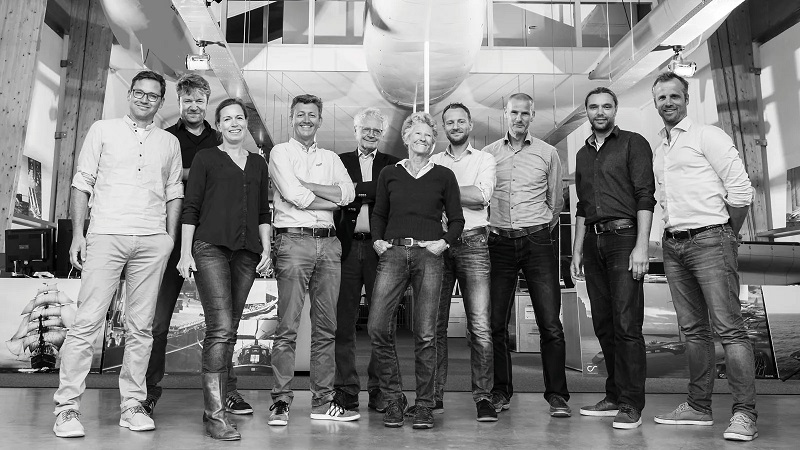The 65-metre sailing yacht Aquarius II has emerged from Royal Huisman's outfitting shed in anticipation of her transport to Amsterdam. From there, she will undergo the final stages of construction, including launch and the stepping of her carbon Rondal masts and booms. She will then embark on her sea trials.
The sailing yacht was commissioned by an experienced yachtsman as successor to his smaller 56-metre Aquarius (Aspara), and reunites the original design and build team: Dykstra Naval Architects, Mark Whiteley and Royal Huisman.

While bigger is generally considered better in the yachting world, large sailing yachts bring a set of unique challenges, as Erik Wassen of Dykstra Naval Architects explained: "Once you step over the 60-metre hull length it’s a challenge to get enough sail area on the boat for a mast height of 62.5 metres. That’s normally the threshold (to fit under the Bridge of the Americas)."
He continued: "But this owner said: 'I’ve done that; I’ve gone through the Panama Canal, so I’m not too worried about the mast height.' That gave us a new opportunity to provide the boat with ample sail area, and we raised the mast five metres, so it’s 67.5 metres air draught. She can’t cross the Panama Canal, but she will have a lot of sail area, so in light breeze conditions she will be driven quite well."

The owner's brief was to capture the essence of his current Aquarius, but with an additional nine-metre increase in length that grants around 45 per cent more volume with space for a fourth guest cabin, a gym and a newly configured owner's cabin with a wraparound sofa.
Aquarius II will have two masts, a lifting fin keel with a draft of 7.6 metres and will fly a total downwind sail area of more than 4,500 square metres. "The owner likes to sail, so the boat needs to be relatively quick in getting the canvas up. That’s taken care of with the in-boom furling and also by keeping the deck equipment relatively simple and minimising clutter. Aquarius II will be quite easy to get under sail," said Wassen.

"When boats get bigger and heavier, they tend to get a bit sluggish in their response. I think the beauty of Aquarius was that she was much more responsive than you would imagine from a yacht of that size, and the owner wants to have at least a similar sort of responsiveness with the bigger boat," he adds. "Hence the large sail area; you want to have a boat with a lot of stability and a lot of sail area that will be easily driven, so in light conditions she will accelerate quickly when you get a gust."
Rondal and Doyle have collaborated with Royal Huisman to ensure optimal performance on a race circuit with a crew of 30 but easy to sail around the world with a reduced delivery crew.

Drawing on experience from the original Aquarius, the new Aquarius II will have semi-hybrid power generation, battery and load smoothing, climate control improvements, side boarding arrangements and a sail and mast design that takes full advantage of the load reductions offered by Doyle’s structured luff developments and Carbo-Link’s solid carbon Elipse rigging. "With a 400-tonne boat, the loads on the rudder are tremendous. There’s a very fine line between having a good feel on the helm and struggling with the helm. So we put quite a lot of effort in optimising the rudder shape and balance," says Wassen.
In terms of aesthetic differences, the yacht will have a slighter lower forestay, a different ratio between the main and mizzen masts and a lower-profile deck house.
Support Vessel 6711 and the Age of Adventure
Yalıkavak Marina: The Land of the Eternal Blue
Industry Brands Drop Anchor in Porto Montenegro
Hainan to build national sports tourism pilot zone
€600,000 price drop on Mondomarine motor yacht My Way
MYS Fleet in Focus: The Timeless Nature of Aquarius
72m Lürssen superyacht Coral Ocean for sale
Riva Opera motor yacht Sula sold
Regent Shanghai Pudong announced for this May
Motorsailer Yacht Le Pietre now for Sale with Engel & Volkers.